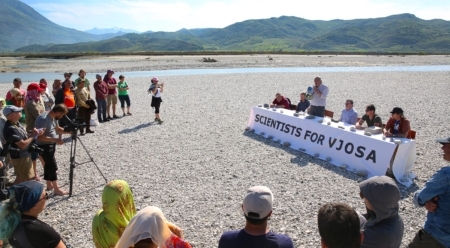Save the Blue Heart of Europe: Scientists for Vjosa
The rivers in the Balkan region are in danger of being damaged by inappropriate river engineering. Of particular concern is the Vjosa in Albania, the last big wild river in Europe outside Russia. From a scientific point of view, the Vjosa is of high value since nowhere else in Europe can one still study the functioning of such a dynamic and natural river system. However, the river is at risk due to planned hydropower dams.
To create a solid background for well-informed management decisions and to help develop sound scientific know-how at local institutions, I decided to launch a research project with my colleague Aleko Miho from the University of Tirana, in Albania. In the last week of April 2017, about 30 scientists from Albania, Austria, Germany and Slovenia set off to study this remarkable river. We felt like explorers on a special adventure: What would we find in these highly dynamic ecosystems? New insights into how large river systems function? New species? Species that have gone extinct in dammed rivers in the rest of Europe?
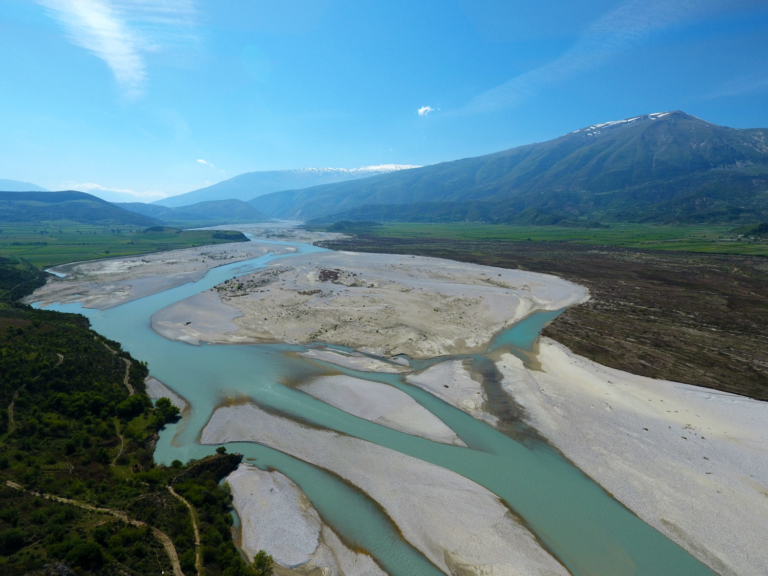
The Vjosa: Europe’s last big wild river outside Russia is insufficiently explored. Photo: © Gregor Subic
Why is the Vjosa so unique and what is at risk?
The Vjosa flows entirely unobstructed from its headwaters in the Pindus Mountains of Greece all the way through Albania to the Adriatic Sea. Such conditions of unobstructed flow have been lost everywhere else in Europe. In its near-natural state, the river is of high value for flood mitigation, water purification processes and the maintenance of a specific biodiversity. The river is an asset to Albanian heritage and represents a precious natural laboratory of significance to all of Europe. From a social and economic point of view, it provides excellent opportunities for future developments, such as tourism.
All this would be destroyed by the hydropower projects currently planned at Poçem and Kalivaç. These projects would disturb the integrity of the river and its environmental services to the people in its valley. The expected threats include:
- Deterioration of groundwater resources
- Development of toxic algal blooms due to the flooding of fertile agricultural areas
- Endangering of characteristic habitat types and species listed in the EU Habitats Directive
- Coastal erosion due to the drastic reduction of sediment transport by the river
- Loss of livelihood of the residents in the affected area, as their agricultural fields are to be drowned in the projected dam reservoir
- Considerable reduction of energy production within a period of about 30 years, as the dam reservoir fills up with the high sediment load of the river
None of these hazards has been properly addressed by the Environmental Impact Assessment (EIA) presented in the Poçem project plan. The EIA provided by the Turkish project applicant is entirely inadequate—a caricature. Therefore, we called upon the Albanian government to reject the EIA and facilitate a proper assessment following EU standards and considering alternative low-impact concepts. This requires an interdisciplinary assessment of the hydrological, geomorphological and ecological status quo and a prognosis of the effects of damming.
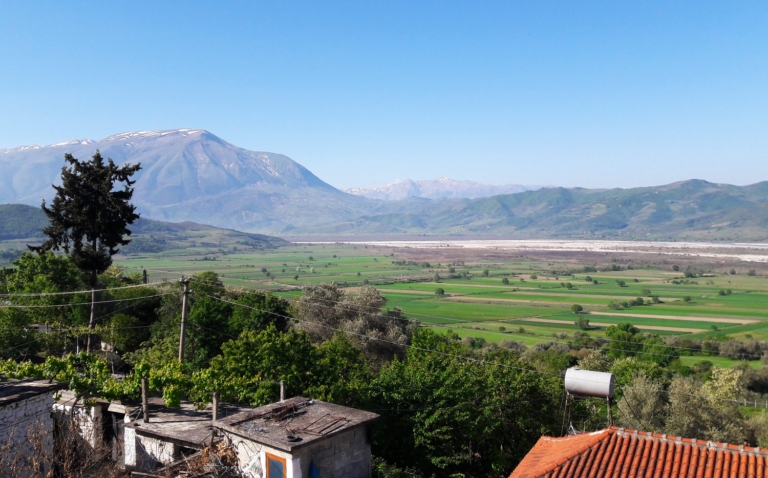
View from the village of Kut. These agricultural fields would be drowned in the dam reservoir. Photo: © Helmut Sattmann
In June 2016 we organized an international Vjosa Science Conference in cooperation with our Albanian colleagues at the University of Tirana. At this occasion, a memorandum was composed, demanding a three-year-moratorium on construction plans of the Poçem project in order to allow for a detailed assessment of the environmental, cultural and economic value of the river system. One must understand the river before deciding its fate. This memorandum was signed by 228 scientists, including the most renowned river ecologists in the world.
One river, one village, one week, thirty scientists
To get a better understanding of the river and define the requirements of a valid Environmental Impact Assessment, we started the initiative “Scientists for Vjosa.” The group of about 30 colleagues represented a wide range of relevant expertise, such as hydrology and geomorphology, geology, limnology, vegetation ecology and the taxonomy and biogeography of major aquatic and terrestrial bio-indicator groups.
All participating experts, having seen many rivers in Europe and around the globe, were intrigued by the enormous habitat diversity—main river channel, side arms, oxbows, pools, gravel bars, islands, rocky parts, swamps, springs and so on—and the richness of a characteristic fauna and flora. Every day yielded new surprises and every evening we gathered at a restaurant in Kut to discuss our discoveries and celebrate them with a drink of the traditional Raki.
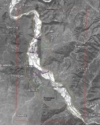
Research area of the Vjosa research week, close to the village of Kut. The area was divided into three transects. Photo: © Google Earth/Prepared by Fluvius
Particularly crucial is the analysis of geomorphological dynamics: How much sediment is transported by the river? How does this sediment transport generate a mosaic of habitat types and, as a consequence, allow for high biodiversity? The measurements of the geomorphology of the floodplains not only confirmed the high dynamics but also indicated the enormous amount of gravel and sand transported by the river. We calculated that the projected dam reservoir would fill up within about 30 years, rendering the hydropower plant essentially ineffective in the long run.
Furthermore, the assessment of habitat types and their predominant vegetation showed that some of these areas are endangered according to EU directives. They are highly dependent on the intact hydromorphological dynamics and are indicative of the outstanding conservation value of the river.
The enormous richness and biogeographic value of the floodplains was documented by a survey of aquatic invertebrates and fish. Once very common species of mayflies, stoneflies and caddisflies, which are now essentially extinct in all regulated rivers in Central Europe, are still very abundant here.
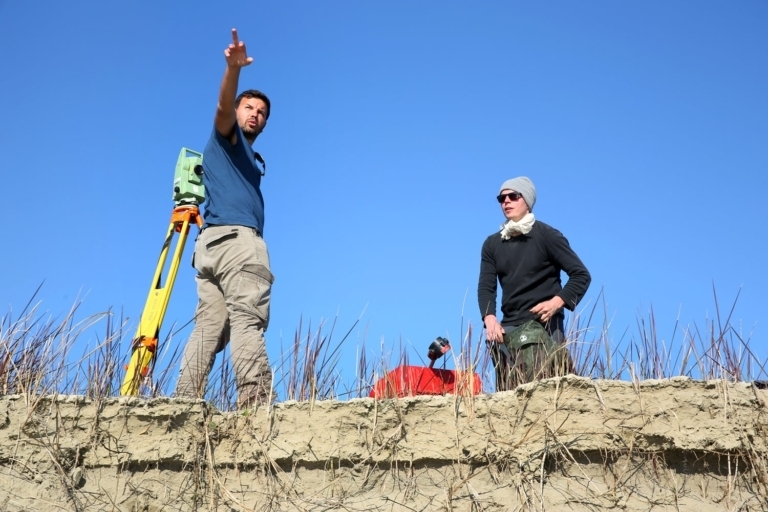
Christoph Hauer (right) and his Albanian colleague Klodian Skrame of the Polytechnic University of Tirana (left) measure the riverbed of the Vjosa for the first time. Photo: © jens-steingaesser.de
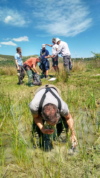
Scientists from four countries research the Vjosa for the first time. They were amazed by what they found. Here, Ullrich Heckes of Büro H2 in Munich (in the front) searches for aquatic insects. Photo: © Cornelia Wieser
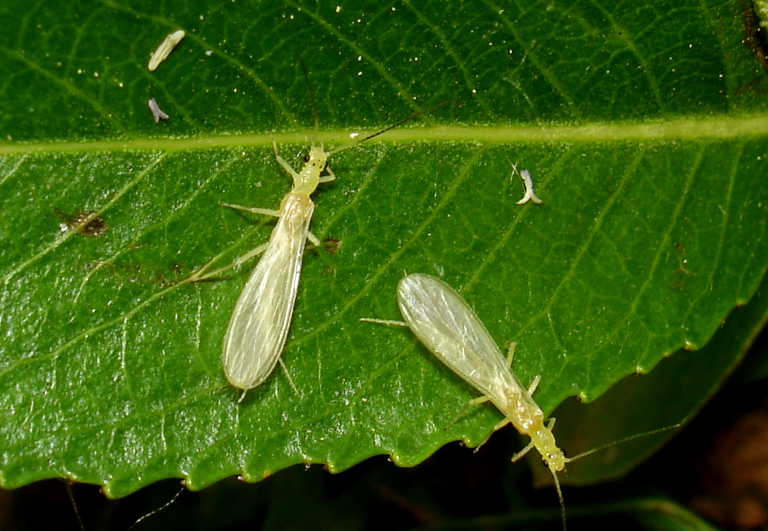
Xanthoperla apicalis, a rare stonefly, the larvae of which are bound to large rivers. Photo: © Wolfram Graf
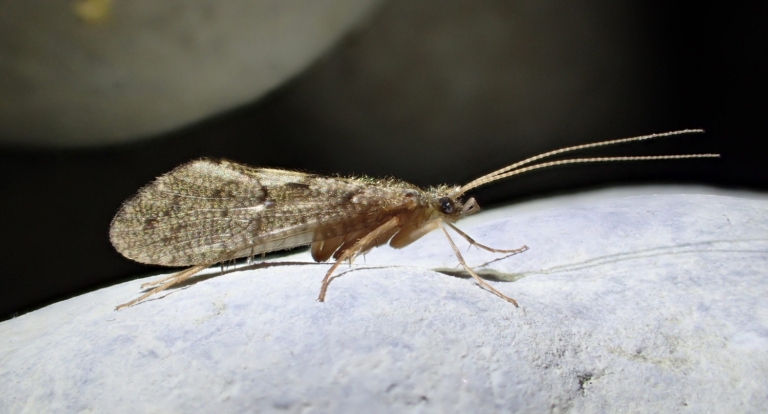
Rhyacophila diakoftensis, a caddisfly, new for Albania. Photo: © Wolfram Graf
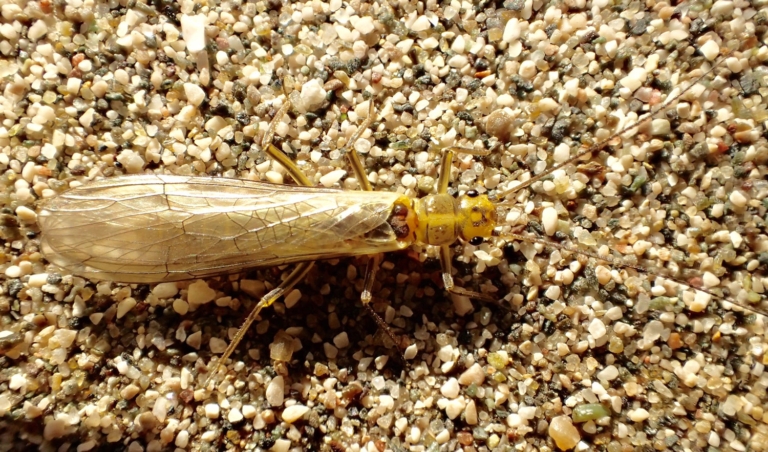
Isoperla sp., a stonefly, probably new to science. Photo: © Wolfram Graf
Enormous effort was put into the assessment of local fish diversity by means of electrofishing. Over 25 species were recorded. The small, carp-like species require an especially careful genetic analysis in the laboratory, since the fish fauna of this area is likely to offer many surprises.
Another indicator of the area’s ecological value is the richness of the terrestrial fauna. High biodiversity and population densities of grasshoppers, bugs and beetle species, which are already rare and endangered in Central Europe, indicate the excellent conditions of riparian habitats.
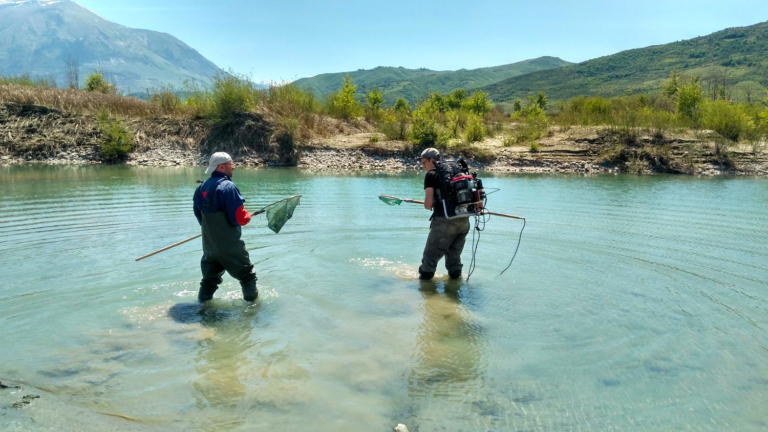
Scientists at work, here while electrofishing. Paul Meulenbroek of BOKU (right) and Sajmir Beqiraj of the University of Tirana (left). In just one week, at least 25 fish species were recorded. Photo: © Cornelia Wieser
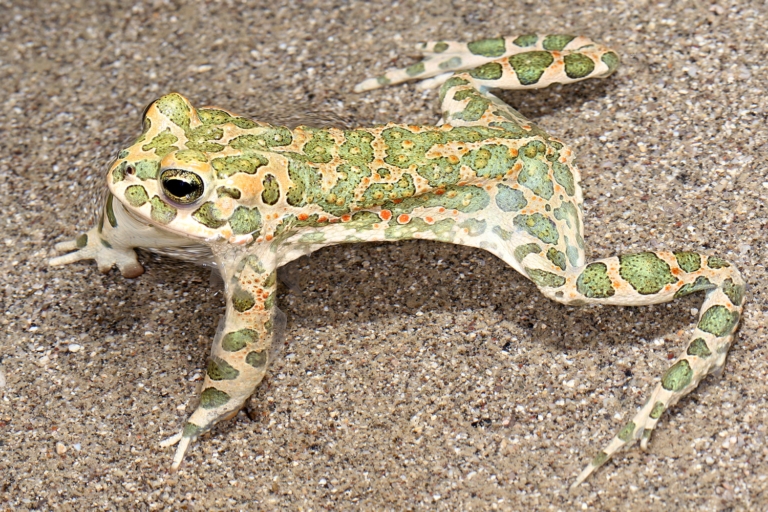
European green toad, protected under the EU Habitats Directive. Photo: © Gernot Kunz
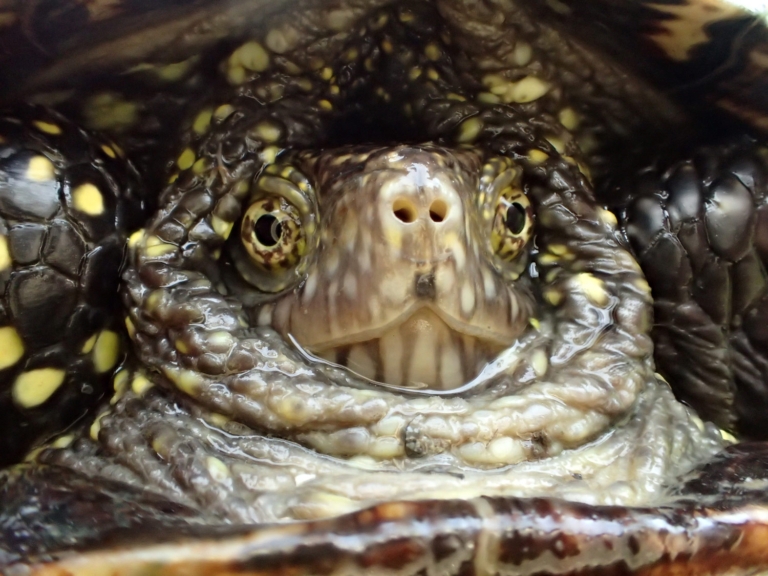
Emys orbicularis—the rare European pond turtle. Photo: © Wolfram Graf
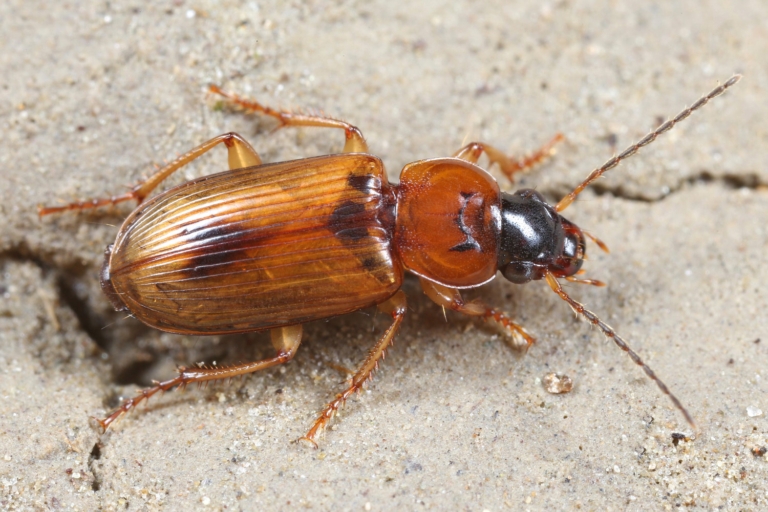
Stenolophus discophorus, a carabid beetle, is a typical representative of dynamic floodplains. The species is well represented in the Poçem area but highly endangered in Central Europe. Photo: © Wolfgang Paill

This rare species of tiger beetle was discovered during the research week, along with many other species. Photo: © Gernot Kunz
Some of my colleagues got so enthusiastic about this richness that they could barely be persuaded to stop their fieldwork and join the evening meetings.
In just one week, we collected so much data, caught so many insects and fish, that it will take several months to process the collected material. During the Vjosa Science Week we communicated our message to the public in an extraordinary press conference on a gravel island in the midst of the Vjosa. In September 2017, we will present the first results in a conference at the University of Tirana. The final results will be published in a scientific volume in 2018. In addition, we will formulate a master plan for solid environmental monitoring.
However, this week of research is only a start. The Albanian government must call for a proper EIA, seriously taking into account all of the impacts dam construction would cause. At minimum, a three-year research program is needed.
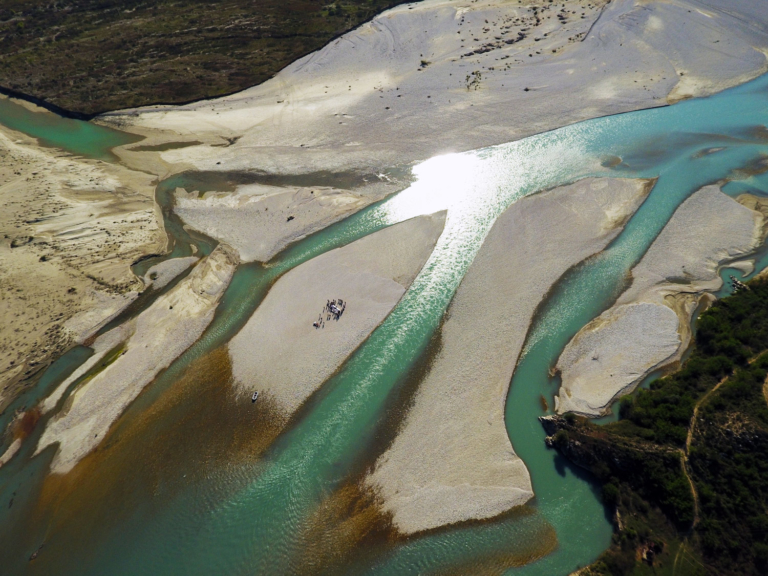
The massive amount of sediments transported by the Vjosa creates a vast variety of habitat types, including the small gravel island where the press conference was held. Photo: © Gregor Šubic
I am not against dam construction per se, but projects have to be evaluated according to strict, modern standards. The Albanian society needs to know the potential consequences of such projects. In the rest of Europe we have learned our lessons the hard way. We have made a lot of mistakes with river damming in the past and are now paying the price: biodiversity losses, increased flood risk, riverbed incision leading to groundwater depletion, problems with coastal erosion, etc. To help avoid such mistakes in the future, we are supporting the Save the Blue Heart of Europe campaign run by the NGOs Riverwatch and EuroNatur.
Finally, I would like to express special thanks to the people of Kut. At first, we must have appeared like aliens to the villagers: strange people running around in their backyards with weird equipment. However, they made us feel at home. We will visit our new friends again in September.
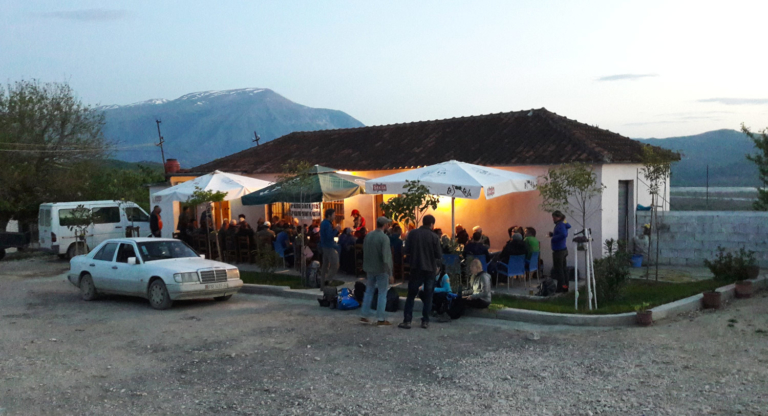
Scientists and locals sing and drink together after an exciting day of research. Photo: © Helmut Sattmann
